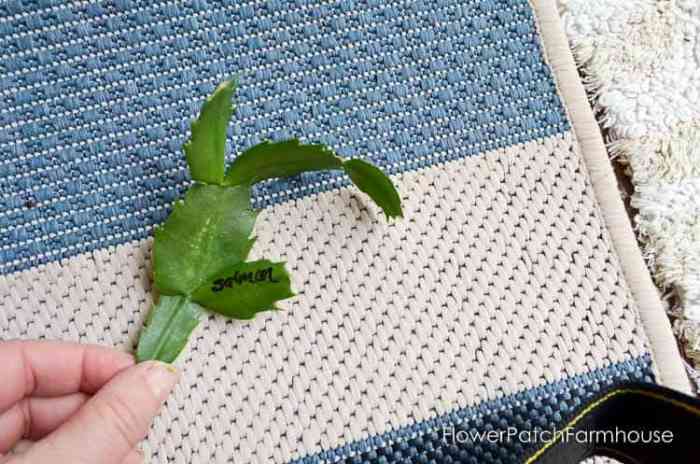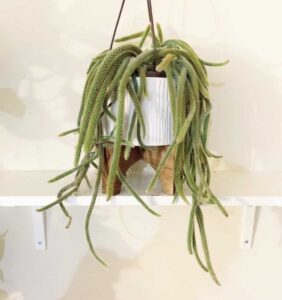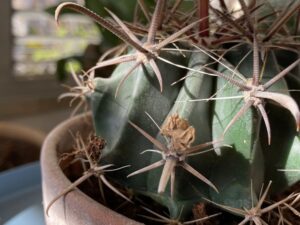Are you ready to embark on a delightful journey of propagating the charming Christmas cactus? Those vibrant, festive blossoms can brighten up any space, but the question arises: how do you ensure that your cuttings flourish? Rooting a Christmas cactus cutting might seem straightforward, yet many enthusiasts encounter a few cryptic challenges along the way. In this article, we will explore the nuances of this process, ensuring you gain a solid understanding of how to root these beautiful plants effectively.
Let’s dive in and discover the art of propagation.
Understanding the Christmas Cactus
Before we plunge into the intricacies of propagation, it’s paramount to appreciate the peculiarities of the Christmas cactus itself. Unlike its desert-dwelling cousins, this species—scientifically known as Schlumbergera—originates from the humid rainforest environments of Brazil. Its unique epiphytic nature means that it thrives in conditions quite distinct from traditional cacti. It prefers indirect sunlight, moderate humidity, and a breathable substrate. Understanding these environmental factors is crucial as you prepare to root cuttings successfully.
Notably, the Christmas cactus boasts flat, segmented stems adorned with serrated edges. During the flowering season, these segments produce exquisite blooms that display a glorious array of pinks, reds, and whites. When considering propagation, one must approach this process with reverence for the plant’s tropical origins.
Choosing the Right Time for Propagation
Timing is a pivotal element in the propagation cycle. The ideal period for taking cuttings is shortly after the flowering phase, typically in late winter to early spring. During this time, the cactus is not under the stress of blooming, allowing for robust growth and recovery. Poised between seasons, your cuttings will have the energy to root and adapt.
However, you might wonder: why is spring such a sweet spot? During this season, the plant awakens from dormancy, and its natural inclination is to generate new growth. By adhering to this optimal timing, you increase the likelihood of success. Remember, each cutting is a new opportunity; treat it with respect and care.
Preparing Your Cuttings
Having identified the perfect time, the next step is to prepare your cuttings with precision and foresight. Select a healthy segment of the plant, ideally 2 to 4 inches in length, ensuring that at least two to three segments are intact. This length will provide sufficient surface area for rooting while maintaining enough nutrients to support growth.
Once you’ve selected your cutting, allow it to callous. Lay the cutting on a clean, dry surface for a few hours or up to a day. This step, often overlooked, is vital for reducing the risk of rot. It allows the severed end to dry out, forming a protective barrier that will help the cutting ward off pathogens during the rooting process.
Choosing the Right Medium for Rooting
Next up is the rooting medium. Choosing the right growing medium can significantly influence your success rate. The medium must possess excellent drainage yet retain enough moisture to promote healthy growth. A mixture of perlite and peat moss or a specialized cactus soil blend works wonders. This combination ensures that water drains efficiently while holding onto the necessary nutrients.
The complexity of moisture control can create a formidable challenge. It’s crucial to monitor humidity levels and water only when the medium dries slightly. Overwatering can lead to suffocation and eventual demise, whereas underwatering can halt the rooting process altogether.
Strategies for Planting Cuttings
Now it’s time to plant your cuttings. Employing a pencil or other pointed tool, create a small hole in your prepared medium to gently insert the tip of the cutting. Ensure the calloused end makes contact with the soil, pushing it in just enough to stabilize it. Avoid burying the cutting deeply; a shallow placement will encourage healthy root growth without the risk of suffocation.
After planting, it’s essential to provide the right environment. Place the pot in bright, indirect light, as too much direct sunlight can scorch the delicate cutting. Covering the cutting with a plastic bag or a dome can help maintain humidity, creating a mini-greenhouse effect. Open it periodically to avoid mold and allow for fresh air circulation.
Becoming Patient: The Art of Waiting
As the weeks pass, patience becomes your most valuable ally. The rooting process generally takes anywhere from a few weeks to several months. Monitoring your cuttings frequently is prudent, as excessive moisture can be detrimental. Watch carefully for signs of growth such as new foliage or swelling of the segments, indicating that roots are forming and the cutting is thriving.
A potential challenge during this waiting game is the temptation to dig or check, which could disrupt the delicate root formation. Remember, patience will yield the best results. Allow your cuttings the space they need to flourish. When you begin to notice growth, you can gently tug on the cutting; if there is resistance, roots have likely developed.
Transplanting the New Star
When the cutting has successfully rooted, it’s time for transplantation. Move it into a slightly larger pot with fresh potting soil. This step not only provides more room for growth but also introduces new nutrients essential for the plant’s lifelong health. Regular watering and appropriate lighting will set your new Christmas cactus on a path to become a thriving member of your indoor garden.
In conclusion, propagating a Christmas cactus cutting can be both an enjoyable and fulfilling endeavor. Navigating through the precise methods, understanding your plant’s unique background, and applying patience will lead to a successful rooting experience. The sense of accomplishment that accompanies nurturing a new plant from cutting to bloom is indeed a reward worth the effort.




Leave a Comment